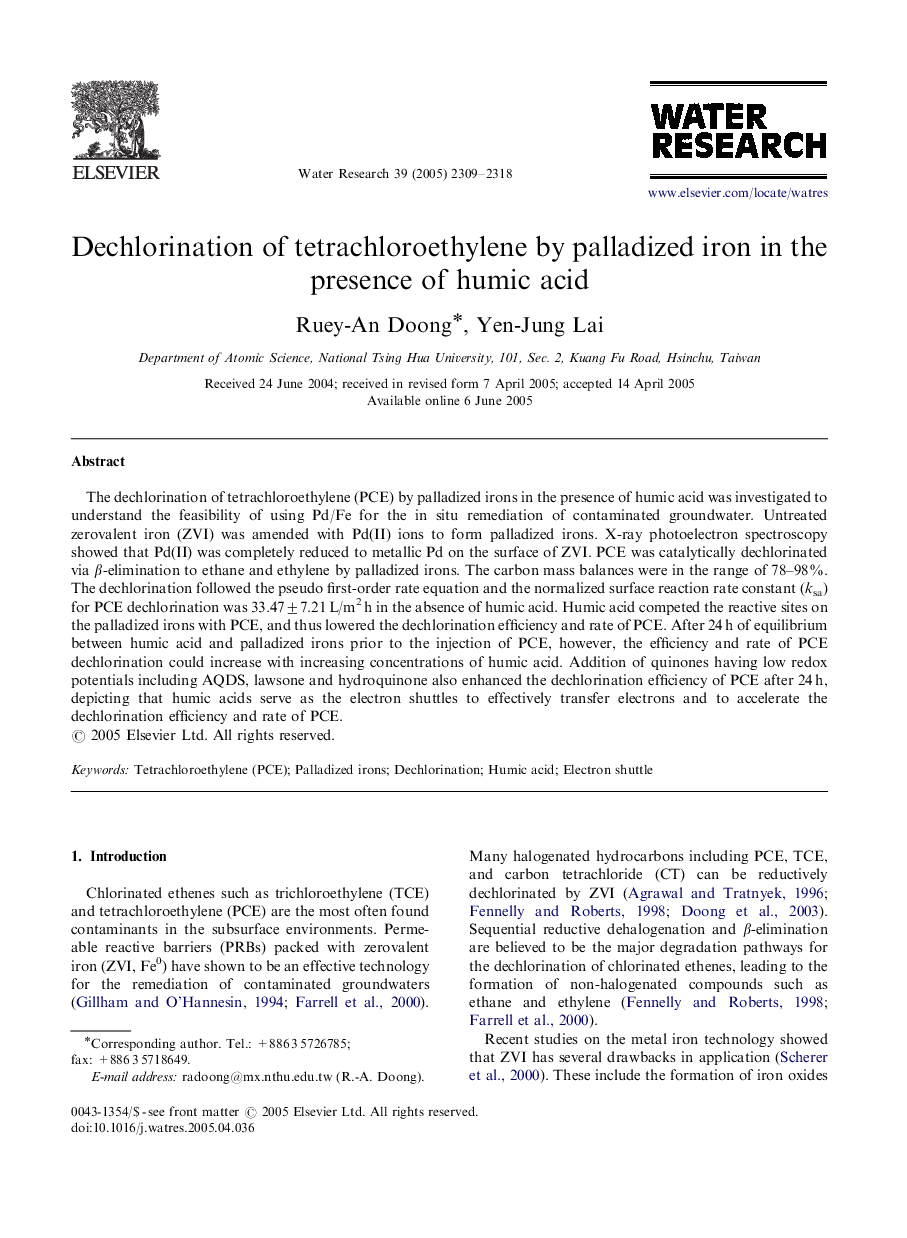| کد مقاله | کد نشریه | سال انتشار | مقاله انگلیسی | نسخه تمام متن |
|---|---|---|---|---|
| 4487043 | 1317010 | 2005 | 10 صفحه PDF | دانلود رایگان |

The dechlorination of tetrachloroethylene (PCE) by palladized irons in the presence of humic acid was investigated to understand the feasibility of using Pd/Fe for the in situ remediation of contaminated groundwater. Untreated zerovalent iron (ZVI) was amended with Pd(II) ions to form palladized irons. X-ray photoelectron spectroscopy showed that Pd(II) was completely reduced to metallic Pd on the surface of ZVI. PCE was catalytically dechlorinated via β-elimination to ethane and ethylene by palladized irons. The carbon mass balances were in the range of 78–98%. The dechlorination followed the pseudo first-order rate equation and the normalized surface reaction rate constant (ksa) for PCE dechlorination was 33.47±7.21 L/m2 h in the absence of humic acid. Humic acid competed the reactive sites on the palladized irons with PCE, and thus lowered the dechlorination efficiency and rate of PCE. After 24 h of equilibrium between humic acid and palladized irons prior to the injection of PCE, however, the efficiency and rate of PCE dechlorination could increase with increasing concentrations of humic acid. Addition of quinones having low redox potentials including AQDS, lawsone and hydroquinone also enhanced the dechlorination efficiency of PCE after 24 h, depicting that humic acids serve as the electron shuttles to effectively transfer electrons and to accelerate the dechlorination efficiency and rate of PCE.
Journal: Water Research - Volume 39, Issue 11, June 2005, Pages 2309–2318